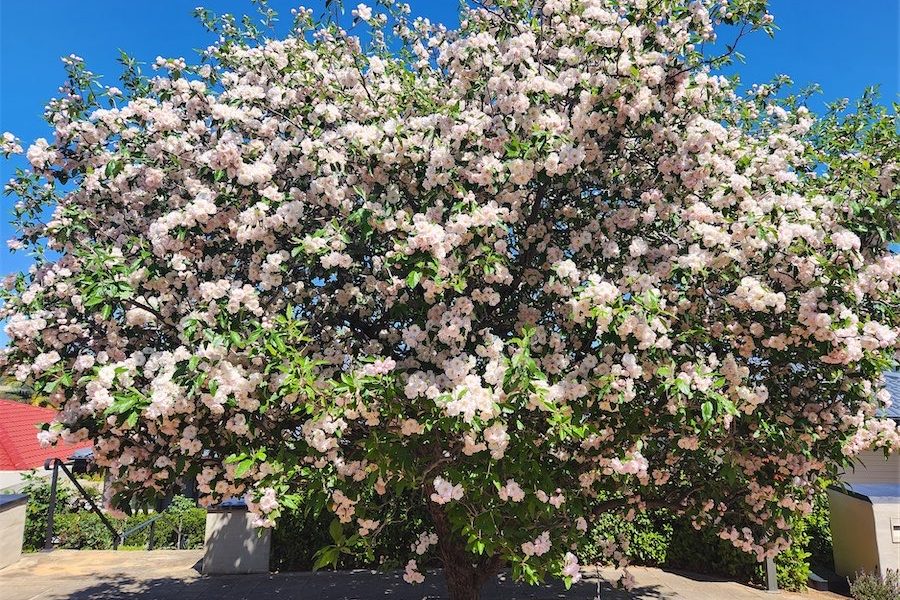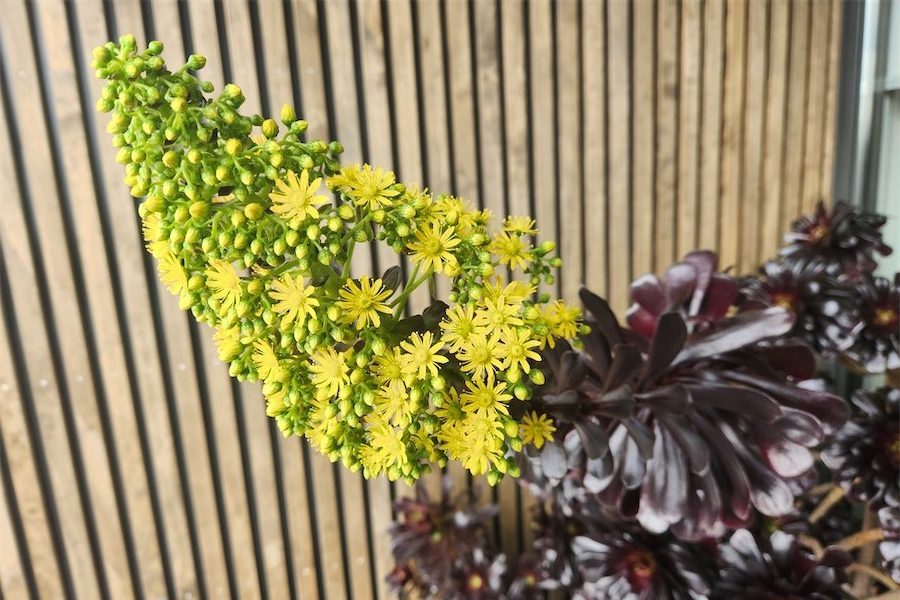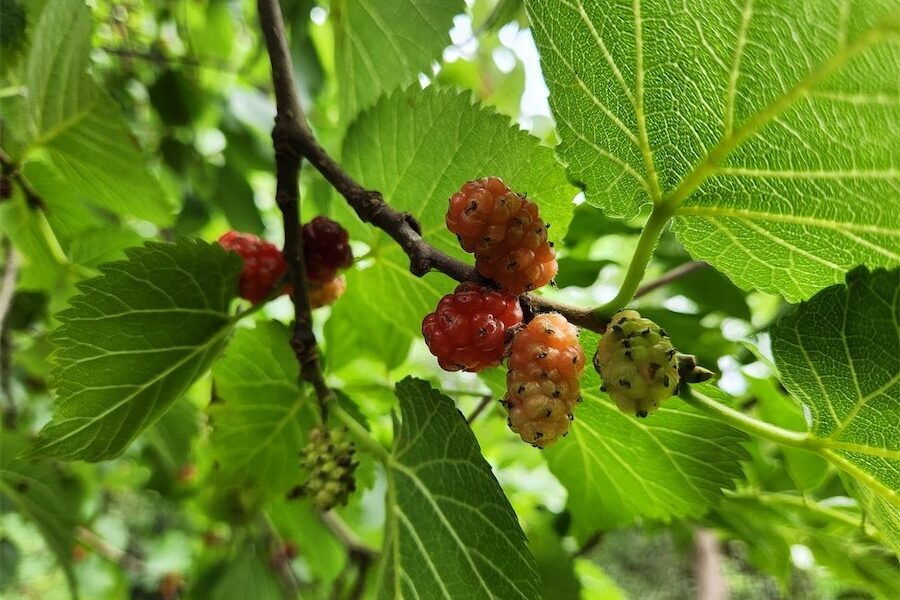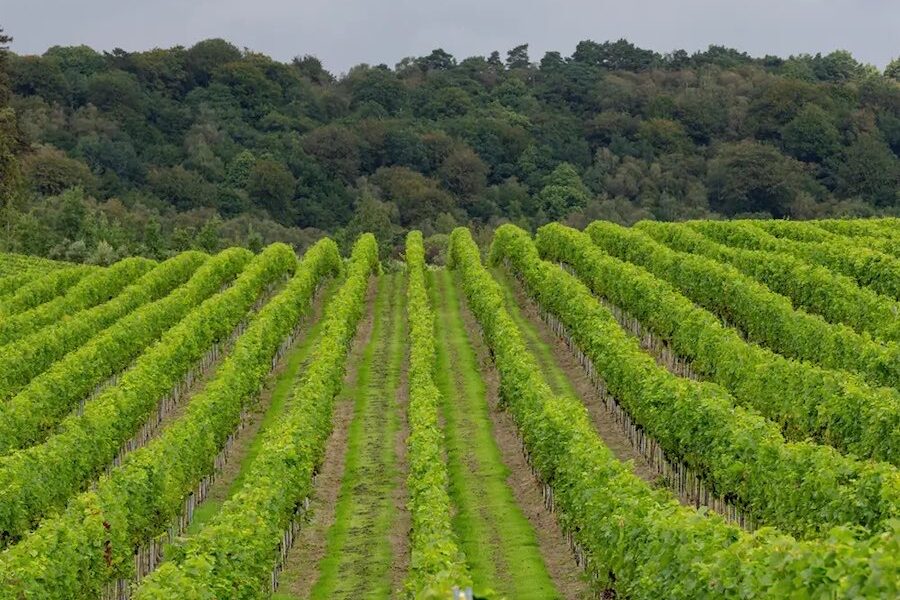
Crab-apples are a popular tree to grow in our region and there are many to choose from, writes gardening columnist JACKIE WARBURTON.
The crab-apple is a small, deciduous tree that puts on an autumn display with foliage colour, but its spring blossoms are what it’s grown for.

Malus ioensis “Plena” is a feature crab-apple tree, big enough to sit under. In spring, in full bloom, it is a showstopper.
It doesn’t produce apples as such, but other varieties of crab-apples are edible and used in pies, jellies and jams.
Crab-apple trees are best pruned in winter when the structure of the tree can be seen and some of the vigorous growth can be directed to where it’s wanted.
Most mature trees will need branches cleaned out from time to time, but the maintenance of this tree is minimal. It likes to be planted in full sun and, once established, needs minimal care.
A crab-apple tree needs to be planted deep to prevent suckering and, apart from a little damage from pear and cherry slugs, overall it’s a great small, shade tree that flowers beautifully in spring.
There are many crab-apple trees to choose from that suit smaller gardens and there are some that will do well in pots.
Planting now, while they are dormant, is a good time. Plant into good soil that’s a little sweet with lots of organic matter.Water in well and water when you see new growth.
I’m trialling a Huonville Red Crab in my garden. It’s a hybrid between a crab-apple and apple. The crimson blooms grow into hand-size fruits with an unusual red flesh and I’m looking forward to it flowering and fruiting this year.

AEONIUMS are a plant that’s been bred to extend its growing conditions to withstand our cold and dry weather. It is a succulent that’s growing in popularity with hybrids, colours and variations.
Its flat, saucer-shaped leaves create interest and grow a little differently than most succulents.
The Aeonium “Zwartkop” has striking, deep-purple foliage. To grow outdoors, it will need protection from the frost. Growing it more in sun than shade will keep its growth compact.
Aeoniums are winter growers. They are dormant in the hotter months and require minimal watering through summer.
Aeoniums can grow roots off their stems if the growing conditions are right and once these roots become strong, the stem of the plant can be removed from the parent plant and put in a pot.
Like all succulents, they grow well in an equal mix of potting mix and coarse sand. Keep them moist, they don’t like to dry out.
Their inflorescence can be striking with its bold yellow and can last up to a few weeks, but once the flower dies that branch, or that part of the rosette, will die. Try not to grow them too fast.
They can be grown by seed, but it would take a long time to get good results. Vegetative propagation is the fastest method. Mealy bugs and aphids can be a problem with aeoniums and a spray with organic neem oil once a month will keep insects at bay and the leaves glossy and shiny.
ALL winter pruning can be done now on clear days, but not before rain.
Feed the soil with mulch, straw, manure or compost and do not use any fertilisers for plants in the winter when they are dormant.
Keep the ground weed free and ready for planting in six to eight weeks when the soil has warmed.
Jottings
- Plant grape vines and kiwi fruit in the next month or two.
- Rhubarb crowns can be dug up, divided and replanted.
- Spray citrus with winter oil to smother stink bug eggs.
- Fertilise growing and flowering bulbs.
Who can be trusted?
In a world of spin and confusion, there’s never been a more important time to support independent journalism in Canberra.
If you trust our work online and want to enforce the power of independent voices, I invite you to make a small contribution.
Every dollar of support is invested back into our journalism to help keep citynews.com.au strong and free.
Thank you,
Ian Meikle, editor





Leave a Reply